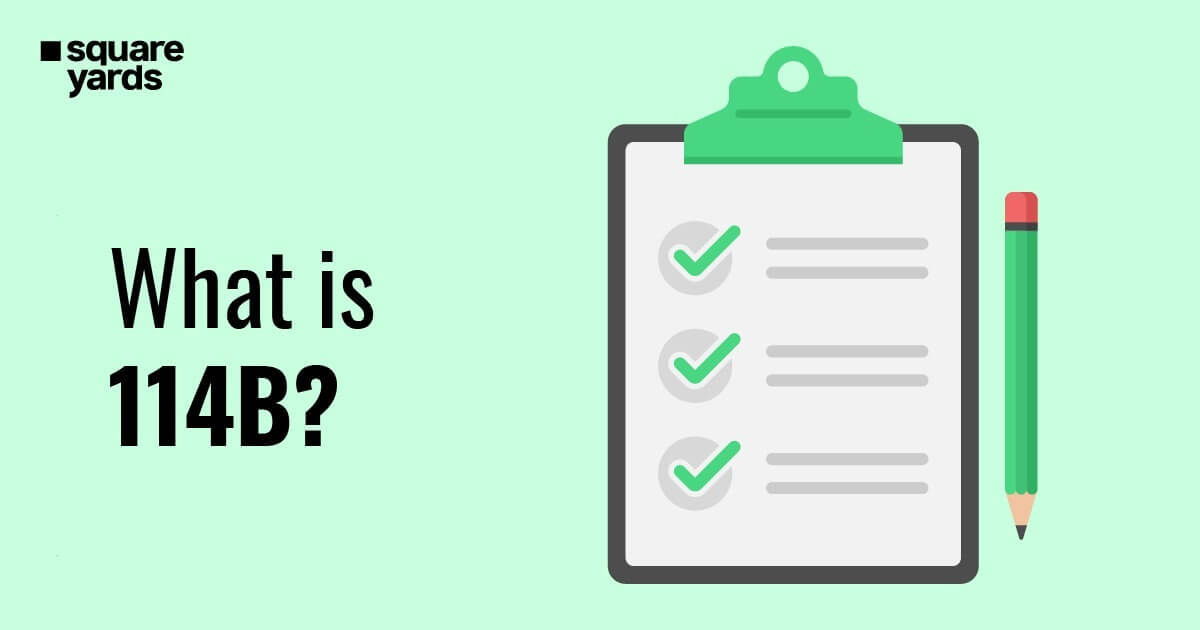Before we start informing you about the latest saving account interest rates from well-known banks, how saving account benefits you, or how the complete process goes, we would like to make you understand.
Table of contents
What is a Saving Account Interest Rate?
A deposit account where you place your savings and get interest on that amount is known as a saving account. And, the rate of interest is known as the savings account interest rate.
In other words, a bank or financial institute where you deposit your savings offers a sum of money (not much) that is referred to as saving account interest rate. Though, the saving account interest rates vary from bank to bank or institution to institution of finance.
Why are Saving Accounts Essential Investments?
Saving account is an essential investment because of the following key takeaways:
- They are easily accessible funds and a good option for short-term financial goals.
- Saving accounts offer moderate interest rates but it’s a reliable source and guarantees assurance from the respective bank.
- You can withdraw an unlimited amount of money from your savings account.
- Also, the interest you earn on your savings account will be considered as taxable income.
- The basic saving account interest rates vary between 2% to 7% p.a. based on daily balance as per the latest changes in rules of all banks.
- You can start your savings account from the minimum balance of zero as well (depending on the bank as some allow zero balance saving accounts and some have minimum balance requirements).
- You can also open high-interest rate producing saving account as they are worth investigating
Now, moving ahead, let’s understand how saving accounts actually works.
Eligibility to Open a Savings Account
Anyone can open the savings account. Any Indian individual can open savings account individually or a joint account as per their personal choice. They just have to fill an application form and submit KYC documents.
Moreover, as per government policies, even a Hindu Undivided Family (a family with the same lineage of a common ancestor) is eligible for opening savings account. And, under some government provisions even foreign nations are allowed to open a savings account if they are staying for long (for work, business, or they need to receive payment). To complete the process they just have to submit their KYC requirements along with the application form.
How does Saving Accounts Interest Rate work for you?
Saving accounts and other deposit accounts play a major role as an important taxable source of income because we get a sum of money considered as the interest rate. The money deposited in the savings accounts is lent to other people by the bank and then they give back some percent of interest to our savings account. Thus, your financial institution can turn around and lend the same amount to others. It works like a cycle followed by every bank.
The savings account interest rates are variable. Banks can raise or lower their saving account interest rate at any time. However, the higher the competitive rate the more it will vary. But in the case of federal funds rate all institutions have to adjust their deposit rates accordingly.
Since you are aware of what is, who can, why it is important, and how saving accounts interest rate work. Let’s take a quick glance at the varying interest rate of different banks in India.
Find Newest Savings Account Interest Rates
Table to compare the Highest and Lowest Saving Account Interest Rates. Choose wisely!
| Bank Name | Interest Rate on Savings Account |
| Axis Bank Savings Account | 3.00% – 3.50% p.a |
| HDFC Bank Savings Account | 3.00% – 3.50% p.a. |
| ICICI Bank Savings Account | 3.00% – 3.50% p.a. |
| Kotak Bank Savings Account | 3.50% – 4.00% p.a. |
| IDFC First Bank Savings Account | 3.50% – 4.00% p.a. |
| Yes Bank Savings Account | 3.00% – 7.00% p.a. |
| IndusInd Bank Savings Account | 3.50% – 6.75% p.a. |
| RBL Bank Savings Account | 4.25% – 6.75% p.a. |
| State Bank of India Savings Account | 2.70 – 3.00% p.a. |
| Union Bank Savings Account | 3.50 – 6.50% p.a. |
Having a savings account works as financial security and as an extensive investment for every person. Therefore, having such a reliable financial product is a good idea for all individuals. As we have discussed, there are many takeaways from the savings account as you can withdraw money from an ATM or bank anytime, save money for short-term goals, and get rate interest without a miss directly into your account.
Apart from the savings account, there are many investment products available in the market with the same or varying names but do not offer a coupled benefit like liquidity and interest at the same time. However, the savings account will help you save, raise money, and cash it whenever required without restrictions.
Savings accounts also make it easy to complete smaller financial growth without stress. And, yes every bank offers different kinds of saving accounts such as – minor saving account (for kids), zero saving account, saving accounts for women, pension savings account, and others. It depends on you, your lifestyle, your income, how you spend it, how much you want to save, and other usages.
From the table above you can check the accurate interest rate you will get from each of the above banks. It is essential to choose your bank wisely and choose the one that fits all your requirements. And to end all of your confusion as well, we have discussed the formula and process to calculate the interest rate in your savings accounts.
How to Calculate the Savings Account Interest Rates?
As per the latest information, RBI asks banks to calculate the interest of the savings account on a daily basis as per the closing amount. And the interest gained will be credited into your account on either a half-yearly or quarterly basis. This rule may also vary as per the bank you have chosen and the type of your savings account.
However, RBI (Reserve Bank of India) emphasis in banks credits the annual interest into the savings account on a quarterly basis as it will be more advantageous to all the customers.
Now, let’s discuss the method to calculate the savings account interest rate for a month.
| Formula —> | Monthly Interest = Everyday Balance * (No. of days) * Interest / (Total Days in the year) |
You can use this formula to calculate an accurate monthly rate of interest. Here is an example to make you understand the calculation process a bit better.
For Example:-
Everyday balance = Rs. 4 lakh (suppose).
The rate interest on the savings account is 4% p.a. (suppose).
We will apply the formula,
Monthly Interest = Everyday Balance * (No. of days) * Interest / (Total Days in the year)
Monthly Interest = 4 lakhs * 30 * (4/100) / 365
Monthly Interest = Rs. 1315
This will be your monthly interest deposit into your savings account.
What is the TDS on Savings Account Interest?
The interest amount that you receive from the bank into your savings account is considered as a source of income from other sources. Therefore this interest must be file for Income Tax Returns.
But, TDS is not applicable on Savings Account as per section 194 A of the IT act. However, savings account interest amount exceeding the limit of Rs. 10,000 has to file for the marginal tax of the concerned account holder. Further, interest from the savings account is not an exception; it is a permanent deduction till the same interest amount is present (Rs. 10,000). You must be aware of this fact.
We would also like to advise you to open a savings account in a recognized public or private bank or with the post office. These are safer methods and reliable.
What are the Benefits of the Savings Account Interest Rate?
- Savings accounts work as a safe place to stash the amount of money after excluding all your everyday expenditures. And use these savings account interest rates for a rain check or to complete a long-term finance saving goal.
- The savings account will always be under the protection of your bank along with the federal protection against bank failures (in case) provided by the Federal Deposit Insurance Corporation (FDIC). This is how your money will be safe rather than stashing it in your own house.
- You are eligible to earn the interest that will work as prize money and increase your entire savings amount. You can use that amount if you want to, wherever and whenever.
- You are eligible to withdraw any amount of money from your savings account anytime and from anywhere from the branch of the same bank (ATM or bank).
- In case, you hold a savings account and checking account in the same financial institute then you can enjoy many offers altogether. This will work at the best convenience and give you a chance to do instant deposits or withdrawals to your savings account.
- Many financial institutes allow opening more than one savings account that can also help you in keeping the track of your savings overall and set different goals.
Moving forward, we have also represented some of the cons of having a savings account which you can check in the pros and cons of the table given below:-
Pros and Cons of Savings Account
| Pros of Savings account | Cons of Savings account |
| Fast & easy to move money from and to | Less interest than other deposit accounts |
| Can be linked to your main account easily | Easy access make withdrawals doubtful |
| Withdraw full balance any time | Few savings account need minimum balance |
| Up to Rs. 500,000 is insured against bank failure. |
We hope you have a clear picture about the advantages and disadvantages of having the savings account. Another advantage is that you can always have other deposit accounts as well without any issues.
Let’s move on and see what are the minimum balance requirements for the savings account.
What are the Minimum Balance Requirements for the Savings Account?
If you have carefully read the criteria for the savings account, then you might have come across the “minimum average balance requirements.” The term can vary as – minimum daily balance, minimum quarterly balance, or minimum balance.
The average balance means that in your savings account you have to maintain some balance for a certain time or all the time (vary as per your bank rule). The average balance is generally calculated by adding up everyday balance and then dividing it by a total number of days of a definite period. Let’s see an example and understand it with a better concept.
For example – If the average quarterly amount in your savings account is of Rs. 5000. Then the average daily balance in your account for that particular quarter must be of Rs. 5000 but if you have Rs. 2000 as the balance for even one day of that quarter. Then you have to pay a fixed amount as a maintenance penalty.
However, almost every Indian bank offers a basic savings amount starting from ‘ZERO.’ Thus, there will be no penalty.
How to Maximize Earnings From Savings Account?
The majority of banks in India indeed offer very low savings account interest rates but some of the banks and credit unions offer higher returns on saving accounts. Most online banks offer such high interest because they don’t have much physical appearance or have very few of them. The money they save from the maintenance they used to give high savings account interest rates.
And, to enjoy such perks, you must start with the bank where you hold your checking account. And, if they don’t offer a competitive price, you will at least get a frame of reference and learn how much more you can earn by moving your savings account elsewhere. But make sure to be cautious.
Let’s Wrap Up!
We hope that by the time you have reached here, you are aware of the savings accounts. How it works, why it is important, how it can help in completing short-term goals. Also, you now have a more subtle image of the minimum amount and documents required to start the savings account. And how it differs from bank to bank and their rules. And, in case you still have some issues, regarding saving account interest rates, don’t forget to comment and ask your doubts. We’re always here to help every now and then!
You May Also Like
| Post Office Savings Account | SBI Balance Enquiry |
| Different Types of Savings Account | Zero Balance Saving Account |
Frequently Asked Questions (FAQ’s)
Which bank gives the highest savings account interest rate?
As per the table given in the blog, Yes Bank and Induslnd bank have the highest savings account interest rate.
How do I get the best interest rate on a savings account?
To get the highest interest rate on a savings account you can opt for online banks as they offer some highest saving account interest rates.
How do savings accounts pay interest?
As per the Reserve Bank of India, all the banks have to give the annual interest amount to their customers quarterly or half-yearly. Here is the formula to calculate the accurate monthly interest on your savings accounts.
“Monthly Interest = Everyday Balance * (No. of days) * Interest / (Total Days in the year)”
Where can I put my money to earn the most interest?
To earn the most interest you can stash your money in different deposit accounts like – High-Yield Savings Accounts, Certificates of Deposit (CDs), Money Market Funds, Money Market Deposit Accounts, and Bonds.
What is a Certificate of Deposit (CD)?
A certificate of deposit (CD) is a deposit account that earns more interest on a certain amount of money that is left untouched or unused for a predetermined time-period.









































